LogosLink User's Manual
·
LogosLink version 2.2.0
Argumentation Model Elements
Argumentation model elements are the atomic components of an argumentation model.
There are many kinds of argumentation model elements.
In addition, argumentation model elements are connected via multiple kinds of relationships, so that they can convey the complexity of the associated argumentation model.
Details
There are many kinds of argumentation model elements, which are described in the following sections.
Locutions represent utterances made by speakers in the discourse.
Locutions within a discourse are strictly time-ordered, even in multi-speaker settings.
Each locution may have start and end timestamps that position it within the discourse.
For example, the text "I am happy today because it's sunny" contains two locutions:
- "I am happy today"
- "because it's sunny"
It's important to respect the literality of locutions, as they are supposed to convey the discourse as it is.
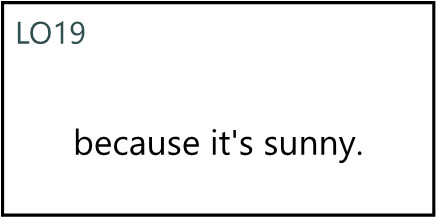 Locutions are shown as rectangles with a black border in the Argumentation Model window.
Locutions are shown as rectangles with a black border in the Argumentation Model window.
Denotations are connections between a fragment of a locution and a concept in the embedded ontology.
Each denotation indicates what fragment of the locution denotates the associated concept.
Transitions represent discursive relationships between locutions.
Transitions provide the links that help the interpretation of a locution in relation to immediately related ones.
There are diffferent subtypes of transitions:
-
Adding: the speaker continues talking by adding a new locution right after the previous one.
-
Alternating: the speaker continues talking by offering an alternative locution to the previous one.
-
Contrasting: the speaker continues talking by contrasting a new locution in relation to the previous one.
-
Embedding: the speaker embeds a locution into another, by e.g. apposition.
-
Reporting: the speaker reports a locution from another speaker.
-
Turn-Taking: the speaker is taking a turn right after the previous speaker.
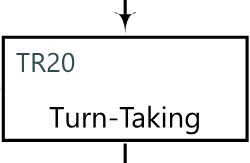 Transitions are shown as smaller rectangles with a black border in the Argumentation Model window.
Transitions are shown as smaller rectangles with a black border in the Argumentation Model window.
Propositions represent states of affairs about the world given by speakers.
Propositions are self-contained and do not include unresolved references such as anaphoric or deictic elements, so that their truth value is stable and as independent of the context as possible.
For example, the locution "because it's sunny" from the sample text above can be reconstructed into a proposition as "Today it's sunny.".
Propositions can be characterised by many properties, such as their statement type, tense, modality, factual aspect, ontological aspect and truth value.
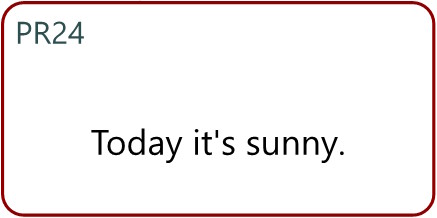 Propositions are shown as rounded rectangles with a reddish border in the Argumentation Model window.
Propositions are shown as rounded rectangles with a reddish border in the Argumentation Model window.
Inferences are argumentation relations that indicate that one or more premises are provided by a speaker to support a conclusion.
The premises and conclusion are propositions.
There are many types of inferences, depending on the properties of the involved propositions and the intention of the speaker.
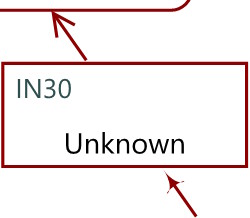 Inferences are shown as smaller rounded rectangles with a reddish border and a pointed arrow head in the Argumentation Model window.
Inferences are shown as smaller rounded rectangles with a reddish border and a pointed arrow head in the Argumentation Model window.
Conflicts are argumentation relations that indicate that a source proposition is provided by a speaker as a reason why a target argumentation element is invalid.
The target argumentation element may be a proposition or another argumentation relation such as an inference, a conflict or a rephrase.
 Conflicts are shown as smaller rounded rectangles with a reddish border and a solid square arrow head in the Argumentation Model window.
Conflicts are shown as smaller rounded rectangles with a reddish border and a solid square arrow head in the Argumentation Model window.
Rephrases are argumentation relations that indicate that a source proposition is provided by a speaker as a reformulation of a target proposition.
There are diffferent subtypes of rephrases:
-
Abstraction: the speaker repeats the target proposition but raising the level of abstraction.
This includes mechanisms such as generalisation, classification and composition.
-
Concretion: the speaker repeats the target proposition but lowering the level of abstraction.
This includes mechanisms such as specialisation, instantiation and decomposition.
- Definition: the speaker unpacks a term in the target proposition by describing its meaning.
- Naming: the speaker provides a term to name an idea in the target proposition.
- Answer: the speaker answers the question in the target proposition.
- Agreement: the speaker expresses agreement with the target proposition.
- Change of Mind: the speaker expresses a change of mind in relation to the target proposition.
- Repetition: the speaker literally repeats the target proposition, or a part of it, for emphasis.
- Paraphrasis: the speaker repeats the target proposition by recasting it in different words that result in a mostly lexical or syntactic change, not that much rhetorical or pragmatic.
-
Reinterpretation: the speaker reinterprets the target proposition by changing its contents but without frontally contradicting it.
This includes mechanisms such as analogies, adding emotional nuance, straw man fallacies, etc.
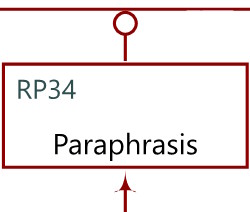 Rephrases are shown as smaller rounded rectangles with a reddish border and a hollow round head in the Argumentation Model window.
Rephrases are shown as smaller rounded rectangles with a reddish border and a hollow round head in the Argumentation Model window.
Illocutionary forces are connections between a discourse element (a locution or transition) and an argumentation element (a proposition or an argumentation relation) in terms of speaker intent.
There are diffferent kinds of illocutionary forces:
- Asserting: the speaker produces a locution in order to communicate that they believe a proposition.
- Questioning: the speaker produces a locution in order to obtain more information.
-
Challenging: the speaker produces a locution in order to obtain a new proposition that works as a premise for a base proposition.
In other words, the speaker is requesting a reason why someone said something.
- Popular conceding: the speaker produces a locution in order to communicate that they believe a well-known and commonly accepted proposition.
- Arguing: the speaker produces a transition to support an inference.
-
Agreeing: the speaker produces a transition to react affirmatively to a proposition through a rephrase.
In other words, the speaker is showing their agreement with something that someone said.
-
Disagreeing: the speaker produces a transition to react negatively to a proposition through a conflict.
In other words, the speaker is showing their disagreement with something that someone said.
- Restating: the speaker produces a transition to rephrase a proposition.
 Illocutionary forces are shown as blue arrows pointing from the discourse to the argumentation in the Argumentation Model window.
Illocutionary forces are shown as blue arrows pointing from the discourse to the argumentation in the Argumentation Model window.
Further information
A complete description of the different argumentation model elements doesn't fit here.
Please refer to the IAT/ML Technical Specification if you are interested in a complete technical description.
See Also
Contents distributed under a Creative Commons Attribution 4.0 International License
·
About
·
Terms of Use
·
Contact Us
·
last updated on 10/09/2025 10:52